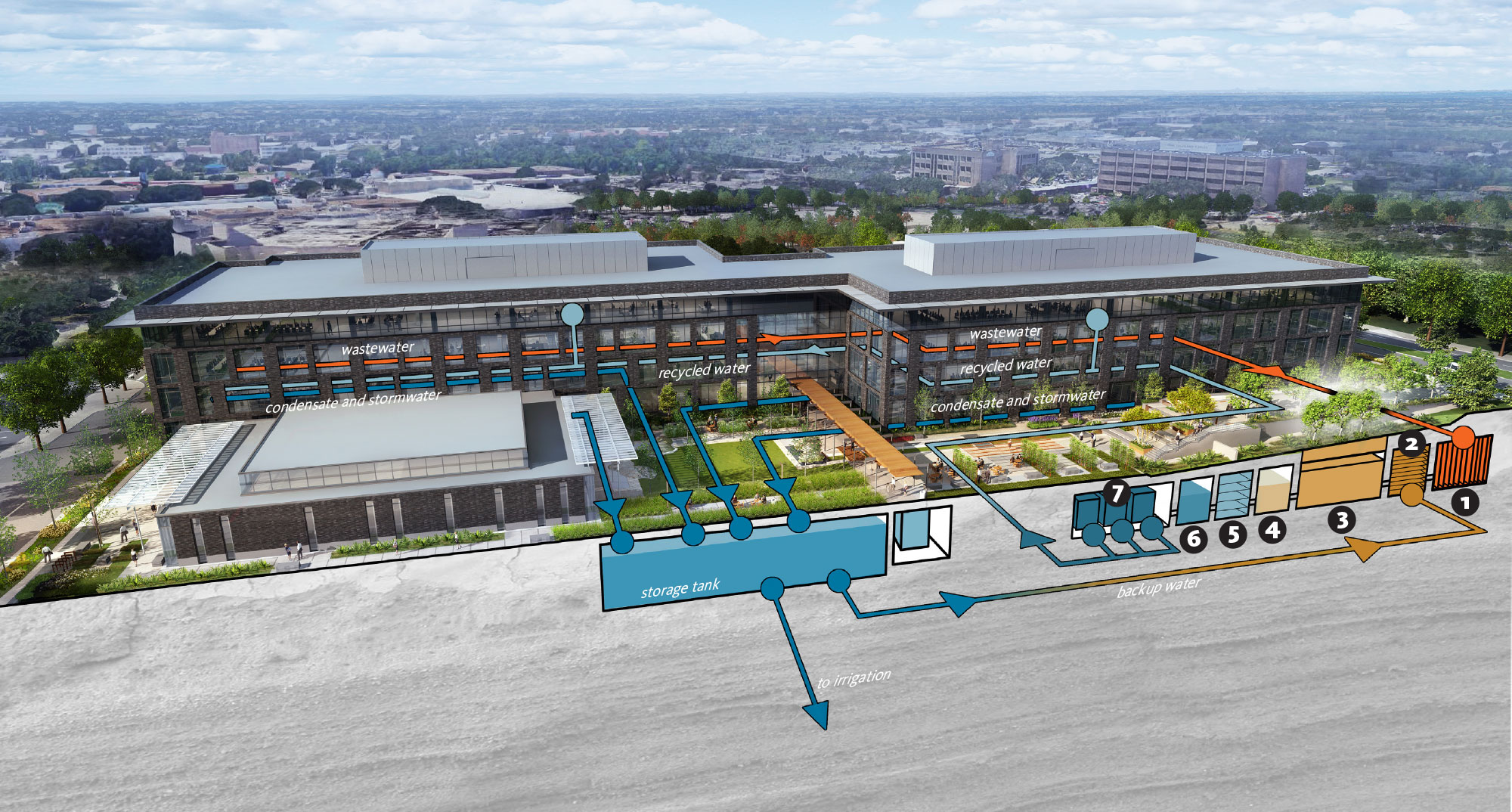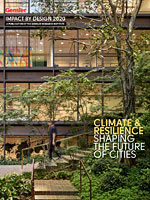Using less water is essential, and recycling water is even more vital. A large amount of energy is required to source, clean, move, heat, and cool water. According to the EPA, wastewater management and drinking water treatment plants are the largest consumers of energy in many American cities — accounting for 30 to 40% of total energy consumed and adding over 45 million tons of greenhouse gases every year. In the U.S., large commercial buildings alone use nearly a billion gallons of water a day. In all commercial buildings, 95% of water demands are for nondrinkable uses, yet potable water tends to be used for these purposes.

The City of Austin Planning and Development Center is the first public building in Texas with a blackwater/reclaimed water system, which can treat 5,000 gallons of water per day and decreases the building’s potable water by 60%.
Buildings can employ closed-loop systems to use, treat, and reuse water completely on-site. Graywater, or wastewater from baths, sinks, washing machines, and other appliances and equipment, can be used for many nondrinking purposes, such as irrigation and industrial processes. While treating and reusing blackwater, or waste from toilets, is still relatively uncommon and isn’t allowed in some areas, the technology to do so is becoming more readily available.
In Impact by Design 2020 we introduce Strategies for Climate Resilience: a collection of six major areas that have the greatest potential for positive climate impact in the coming years.
